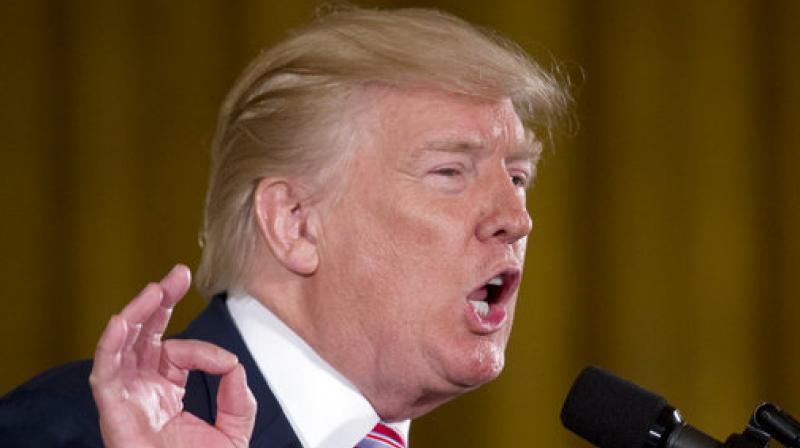Can Trump be impeached?

Who will rid me of this turbulent priest?” Henry II’s exclamation was understood by his courtiers to be a command, and Thomas Becket was murdered. A similarly veiled command by a head of state lies at the heart of the incipient moves for the impeachment of President Donald Trump. When he summoned the then FBI director, James Comey, to the Oval Office on February 14, Trump told him, “I hope you can let Flynn go.” He was alluding to national security adviser Michael Flynn whom he had sacked. In his testimony to the US Senate intelligence committee on June 8, Comey said, “I took it as a direction.” Trump took care to ask all others, including Attorney General Jeff Sessions, and his son-in-law Jared Kushner, to leave the room before broaching the subject with Comey. At a news conference on May 18, Trump was asked, “Did you, at any time, urge (Comey) to close the investigation into Michael Flynn?” The answer was revealing in its abruptness. “No, no. Next question.” All this supports Comey’s assertion that he was dismissed because he was investigating charges that “the Russians interfered in our elections” against Hillary. That web of “the Russian connection” is for the special counsel, Robert S. Mueller III, to unearth.
On June 14, the Washington Post reported that Mueller was investigating the President for obstruction of justice. The articles of impeachment framed against Presidents Richard Nixon and Bill Clinton cited, among the charges, obstruction of justice as well as telling lies. However, both Nixon and Clinton faced a Senate in which each had majority support. Trump’s Republican Party commands a majority in both the House of Representatives, which files the charges, and the Senate, which tries the President. At the Senate intelligence committee’s proceedings on June 8, the split along party lines was very evident. Article 11, Section 4 of the US Constitution provides, “The President, vice-president and all officers of the United States, shall be removed from office on impeachment for, and conviction of, treason, bribery, or other crimes.” It is now firmly established that obstruction of justice constitutes a misdemeanour; especially if it is compounded with lies. The process begins with an investigation by the judiciary committee, which may recommend impeachment to the house. If a majority of the house ratifies the impeachment, the case against the President proceeds to a trial by the Senate, presided over by the Chief Justice of the SC. The Senate has the power to convict and remove the President by a two-thirds vote.
When the house judiciary committee voted on impeachment against Nixon, it asserted that grave “transgressions can crack party loyalty; six of the committee’s 17 Republicans joined all 21 Democrats in backing two of the three articles that the committee endorsed”. Faced with a vote in favour of impeachment, Nixon resigned. For years, impeachment has been a thoroughly discredited process. In 1967, a report of the UK House of Commons select committee on parliamentary privileges recommended that “the right to impeach be abandoned”. When, in 1990, there was a rash of cases of judicial corruption, the then Indian CJ Sabyasachi Mukherji characterised impeachment as “practically impossible”. A judge of the Indian SC, Justice V. Ramaswami, was found guilty of grave charges by a committee. On May 11, 1993, the Lok Sabha rejected a motion for his impeachment by 196 votes for it, none against — but 205 abstentions, which robbed it of the 273 votes needed for its adoption. The abstentions were ordered by Prime Minister P.V. Narsimha Rao. Impeachment is discredited, yet it is not pronounced dead. It only helps to protect corrupt judges.
By arrangement with Dawn

